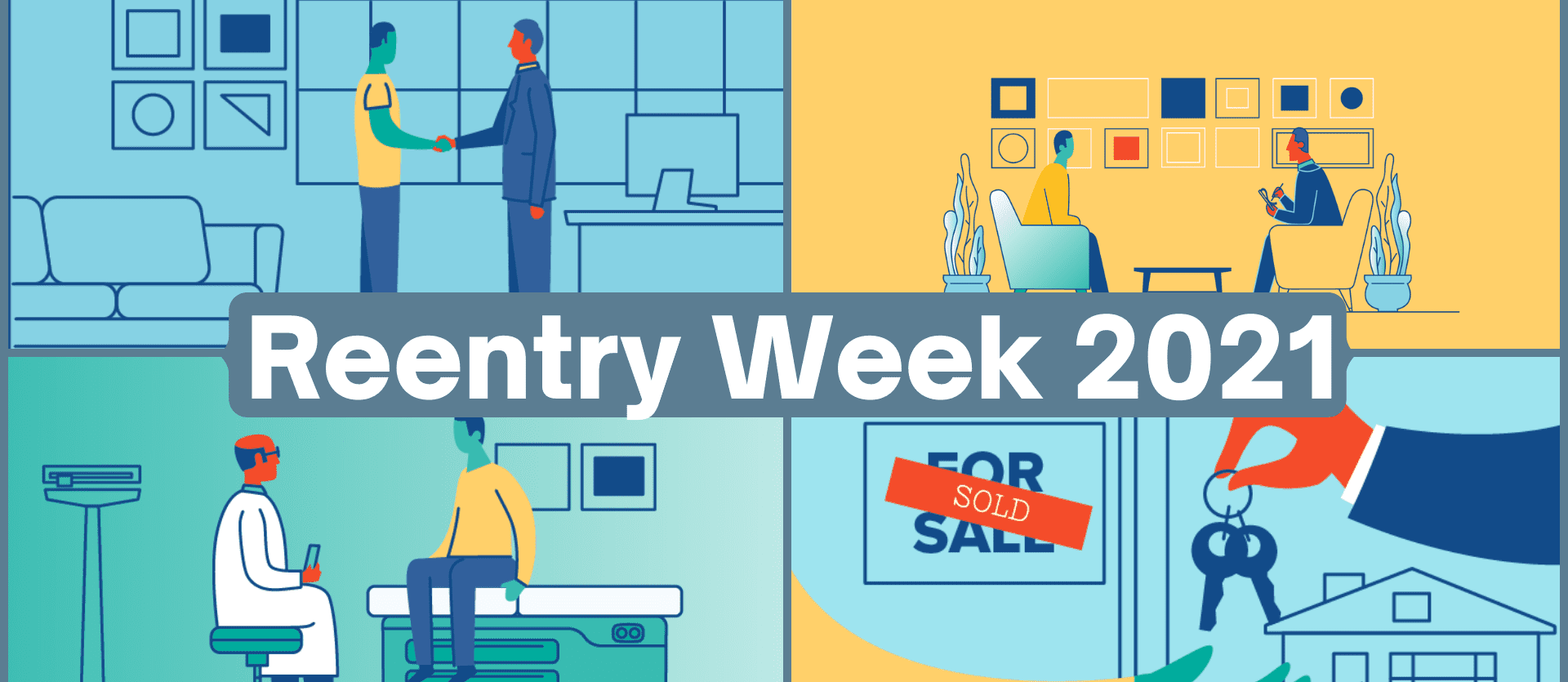
Supporting the Well-Being of Children and Their Incarcerated Parents During and Beyond the Pandemic
In March 2020, agencies across the U.S. began enacting measures to reduce the spread of COVID-19. Departments of corrections in every state suspended in-person contact visits within their prisons and jails and developed policies that changed the way incarcerated parents engage with their children and other loved ones.
To learn more about how corrections agencies have adapted and what lessons the field should take to ensure parent-child contact during incarceration occurs as the pandemic continues, staff from The Council of State Governments Justice Center spoke with Ann Adalist-Estrin, the director of the National Resource Center on Children and Families of the Incarcerated (NRCCFI) at Rutgers University in Camden, New Jersey. The interview has been edited for length and clarity.
What is communication typically like between incarcerated parents and their children or loved ones under normal circumstances or, in other words, prior to the pandemic?
[T]his is not one monolithic group. While there are definitely common themes, there are lots of variations that influence what communication is typically like. Whether it is the mother or the father who is incarcerated, the age of the child, the caregiver’s support for communication between the child and their incarcerated parent—all these variations matter.
The communication also depends on the prison system and its infrastructure, whether they have email availability (which is rare), what the phone systems are set up like, and what it costs for the families. For most kids, the communication is typically by phone. Many children do visit their parents, but not often. Since most parents are incarcerated over 100 miles from their families, they are limited to a visit or two during the incarceration period or possibly yearly.
How has communication changed during the pandemic?
In the last five to seven years, there has been a movement to improve connections between children and their incarcerated parents, with support from federal and state grants and foundation money, and with publications like Model Practices for Parents in Prisons and Jails: Reducing Barriers to Family Connections. Those programs and initiatives were just beginning to get underway when COVID-19 hit. So, one very big piece of the impact of COVID-19 is that those wonderful initiatives to create family-friendly and child-friendly communications and visiting have been stalled or have completely had to shift.
The second piece is that, of course, communication is more limited. Within the prison facilities, COVID-19 initially eliminated all in-person visits, and then there are limitations on how many people can wait in line for phones and how many phones are available. Additionally, the limited access to phones is compounding worries about COVID-19: a lot of incarcerated parents don’t know how their families are faring; the kids don’t know how their loved ones are faring.
The economic impact of the pandemic has also been difficult for many families impacted by incarceration. They say that the average income of a family decreases between 25 and 40 percent from the year before the incarceration of a family member. Since families pay for phone and any electronic communication, and families—particularly low-income families of color—are severely impacted by the economics of COVID-19, many are no longer able to pay for those connections. As a result, a lot of families are going back to using snail mail. This year we’ve seen an uptick in incarcerated parents asking us in letters if we could reach out to their kids and find out how they are dealing with COVID-19, or to let their families know that they’re not sick.
How are these changes in communication affecting the children of parents who are incarcerated?
The incarceration of a parent is traumatic. The separation between the child and the parent is most often the primary cause of that trauma. The stress hormones that are related to trauma can be balanced out by hormones that are excreted when we feel safe. For children, their primary caregivers are those safety factors or ingredients of resilience in the face of trauma. So, when the separation is traumatic and the person that would be the buffer from that trauma is gone, communication through visits, phone, or video allows for that connection to continue to be a protective factor or a buffer from the trauma.
COVID-19 has added a ton of toxic stress to the lives of the kids and their families. Whether or not they had a really strong relationship with the parent who is incarcerated, they’re still worried about their welfare during the pandemic. So, the toxic stress and trauma have increased, while the connection to and the availability of the parent has decreased. Then, add to that the fact that most of them are doing online school and are away from their friends, which would be another protective factor or another ingredient for resilience. It’s a recipe for a lot of anxiety and depression, and then acting-out behaviors, which are very common for all kids when they’re stressed and trying to figure out how to cope.
And since this is Reentry Week—ongoing contact and communication between children and their incarcerated parents has been a key factor in reentry success for returning parents and their families. COVID-19 restrictions could make these reunifications much more difficult.
You mentioned the financial stressors related to being able to connect with the parent who is incarcerated and how the pandemic is exacerbating this issue. How are correctional agencies addressing these disruptions and trying to alleviate some of the financial burden or other barriers to communication?
In the first six months of the pandemic, many corrections agencies shut down all visits and began to offer free phone calls through contracted communications providers. In the second six months, we started to see those free phone calls vanish, in part because families found them more difficult to use than anticipated. In some cases, a person may only have one free phone call a week, and if no one answered the call or the call got dropped for some reason, that counted as their free call. Some families have also said that the providers still required them to have a credit card in order to register for the free calls.
A lot of facilities were also building infrastructure for video visits before COVID-19, and those facilities have been able to start using video technology more broadly during the pandemic. The same is happening with in-person visits. Some facilities had enough plexiglass barriers and could begin to reintroduce in-person visits with the barriers as a protector for the virus, while other facilities have very few of those.
What are some takeaways from the COVID-19 pandemic that we can apply to facility visits and communication policies in the future?
First, we should assess the impact of COVID-19 and the changes in contact on families and involve them in making decisions, such as whether to reopen in-person visits. This could involve sending questionnaires to children and families and developing advisory groups for correctional programming that include families and formerly incarcerated parents. “Nothing about us without us” is what I would remind people.
Secondly, knowledge is power, and the more, the better in terms of what corrections agencies can put on their websites to help families. State departments of corrections and county correctional facilities are creating materials like caregiver guides, videos for kids on ways to communicate without being able to visit, and lists of recommended children’s books—things that typically haven’t been on the websites of departments of corrections.
Also, make sure there are options for connections. While video visiting and barrier visits are important options, particularly during the pandemic, this shouldn’t take the place of in-person contact and live connection. Being able to touch and smell and see their parent is crucial. The children need the contact for their well-being. The parents themselves are the antidote to the trauma of parental incarceration.
I would also lift up this newer idea of training correctional officers on the issues related to kids, trauma, family relationships, and how to support parents inside. A lot of people are interested in training correctional officers now, because we can do it electronically and there’s a little more time to do it.
This project was supported by Grant No. 2020-CZ-BX-K001 awarded by the Bureau of Justice Assistance. The Bureau of Justice Assistance is a component of the Department of Justice’s Office of Justice Programs, which also includes the Bureau of Justice Statistics, the National Institute of Justice, the Office of Juvenile Justice and Delinquency Prevention, the Office for Victims of Crime, and the SMART Office. Points of view or opinions in this document are those of the author and do not necessarily represent the official position or policies of the U.S. Department of Justice.
Photo by Daiga Ellaby on Unsplash.
ABOUT THE EXPERT

ABOUT THE AUTHOR

 New Hampshire Continues Justice Reinvestment Effort to Improve Conditions for People Who Are High Utilizers of Criminal Justice and Behavioral Health Systems
Read More
New Hampshire Continues Justice Reinvestment Effort to Improve Conditions for People Who Are High Utilizers of Criminal Justice and Behavioral Health Systems
Read More
 New Hampshire Commission Reviews Final Policy Recommendations to Reduce Reliance on Incarceration as Part of Justice Reinvestment Initiative
Read More
New Hampshire Commission Reviews Final Policy Recommendations to Reduce Reliance on Incarceration as Part of Justice Reinvestment Initiative
Read More
 Three Things to Know About New Jersey’s Groundbreaking Community Response Legislation
Three Things to Know About New Jersey’s Groundbreaking Community Response Legislation
In response to growing calls for police reform in New Jersey, particularly…
Read More












